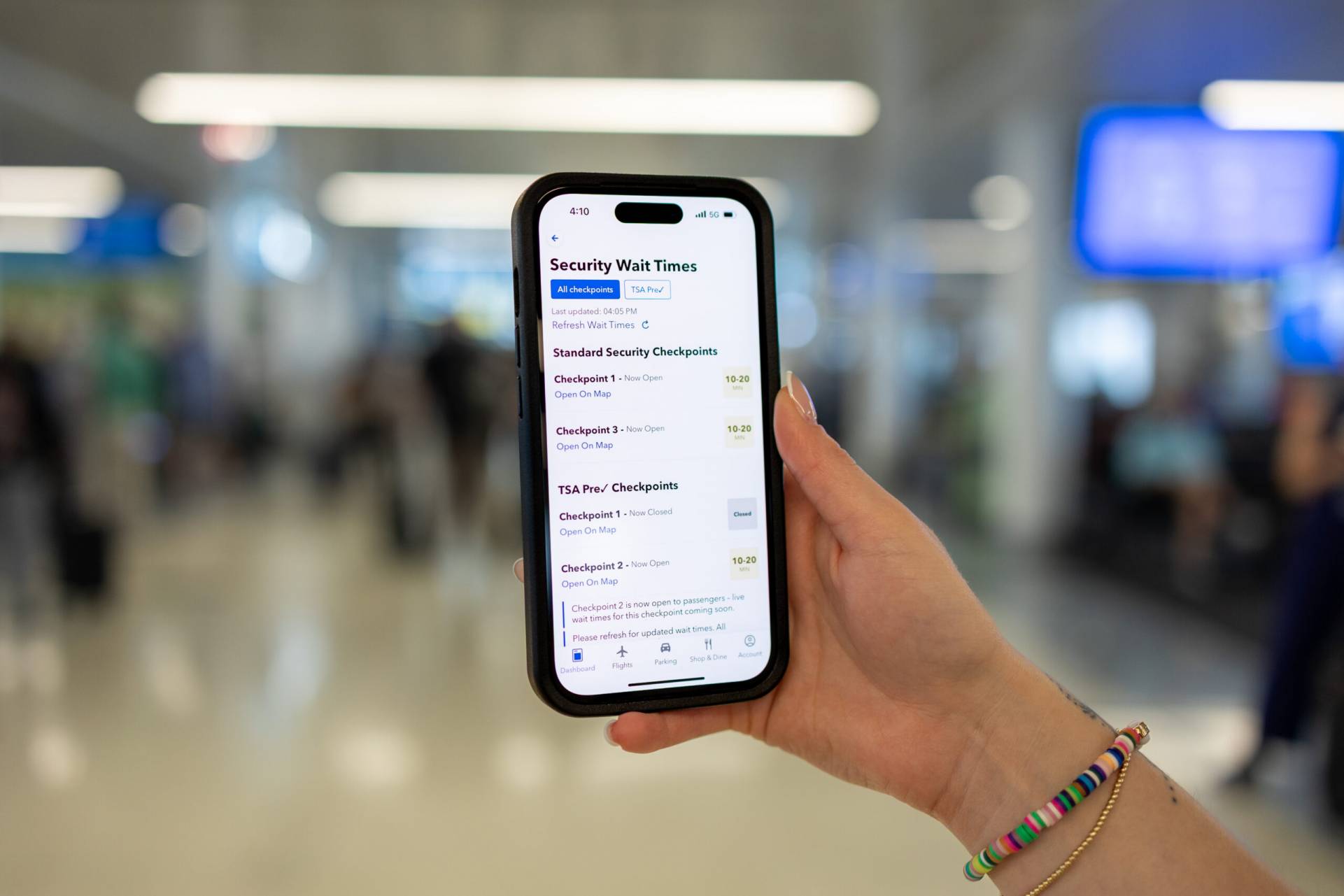
Smarter systems, smoother journeys
How Charlotte Douglas International Airport is enhancing the passenger experience through targeted innovation
By Rich Adkins, Innovations Implementation Manager | Charlotte Douglas International Airport
At one of the busiest connecting hubs in the country, delivering a smooth, efficient passenger journey at Charlotte Douglas International Airport is essential. To accommodate our nearly 60 million annual travelers and growing demand, we are using emerging solutions to modernize our facilities and keep people moving.
The airport’s Innovation Experience Division is advancing a data-driven, outcomes-focused strategy to reduce friction at key touchpoints, improve responsiveness during peak periods and better align operations with passenger expectations. By enhancing visibility into how people move through the airport and applying new tools to streamline that movement, CLT is improving the travel experience from curb to gate and beyond.
Enhancing flow from curb to gate
CLT’s innovation efforts begin before passengers even step inside the terminal. Digital tools like mobile check-in and pre-booked parking reservations are simplifying early decision points while giving the airport valuable insights into arrival patterns. These data sources, combined with emerging sensor technology that can monitor traffic flow, are helping to close longstanding gaps between physical infrastructure and digital services.
The goal is to create a more connected journey, linking pre-arrival data with in-terminal activity to identify pressure points, anticipate needs and better allocate resources. These insights not only help manage daily passenger volume, but also inform long-term planning for roadway access, curbside flow and landside infrastructure improvements that support overall efficiency. CLT is evaluating tools like artificial intelligence and machine learning to improve forecasting and allow for dynamic adjustments during peak periods or irregular operations. These capabilities could also serve as a critical link to terminal operations, enabling a seamless flow of information between landside and airside systems.
Optimizing terminal operations through real-time data
Within the terminal, CLT is applying its innovation strategy to better manage passenger flow and reduce delays. Using LIDAR-based sensors installed at Transportation Security Administration (TSA) checkpoints, the airport collects real-time data on crowd density and wait times. These insights are published in the CLT app to help passengers plan their journey and alleviate stress.
Originally deployed during a four-year terminal lobby expansion project that consolidated five smaller checkpoints into three high-capacity screening areas, the technology also proved essential for managing congestion and maintaining service quality amid construction. Today, the system informs everything from daily staffing to future facility planning and is being considered for expansion into other high-traffic areas like the federal inspection station.
By combining real-time visibility with historical patterns, CLT is developing a more adaptive approach to terminal operations — one that prioritizes responsiveness, flexibility and long-term growth. For travelers, this visibility translates to shorter lines, faster processing and more accurate wait-time expectations — improving both convenience and confidence as they navigate the airport.

"Whether the goal is reducing congestion, improving traveler satisfaction or building operational resilience, each initiative is driven by data, defined success metrics and a commitment to long-term value."
Streamlining international arrivals with biometric screening
The most visible example of CLT’s technology-driven passenger improvements is its biometric screening program, developed in partnership with U.S. Customs and Border Protection (CBP). At the federal inspection station, the airport has introduced facial recognition technology that verifies passengers using images matched to passport records through CBP’s cloud-based Traveler Verification Service. Upon arrival, U.S. citizens step in front of a tablet equipped with a camera, which captures a live image of them. This image is then temporarily transmitted to the cloud where it is compared in real time to the passenger’s existing passport photo. Once verified, the passenger is cleared to proceed—often in a matter of seconds.
Since launching in early 2025, the program has reduced wait times for U.S. citizens by nearly 50% — from 16 minutes to just 8.6 minutes. Non-U.S. citizens have also benefited, with average wait times dropping from 22 minutes to 14 minutes. These gains are especially valuable during peak periods, when the risk of missed connections is greatest.
CLT partnered with BigBear.ai to deploy the technology and engaged Dallas-Fort Worth International Airport to preview their approach. The result is a program that is not only reducing wait times but also supporting broader CBP efforts to scale biometric entry nationwide.
Coordinating change across partners and departments
Implementing innovation at this scale requires close coordination across stakeholders. CLT’s Innovation Experience Division works closely with CBP, the Transportation Security Administration (TSA) and airline partners to ensure each new initiative aligns with day-to-day operational needs.
Internally, the division collaborates with teams across the Aviation Department to target pilot programs where they can have the greatest impact. Training and adoption are supported through on-site vendor walkthroughs, hands-on assistance and clearly defined outcome metrics. These practices ensure that new technologies are integrated without disrupting existing workflows.
What unites CLT’s innovation efforts is a shared focus on outcomes. Whether the goal is reducing congestion, improving traveler satisfaction or building operational resilience, each initiative is driven by data, defined success metrics and a commitment to long-term value.
Building a smarter, more connected future
As CLT continues to grow, its innovation strategy evolves in tandem. The airport is working to close the remaining gaps in the passenger journey, gaining better visibility into how travelers move from parking to the gate, and using those insights to deliver smoother, more personalized service.
Looking ahead, CLT is exploring ways to better integrate the physical and digital aspects of the airport experience. Tools like AI, sensor networks and predictive analytics will play an increasing role in shaping operational decisions and improving the passenger journey.
Through strategic partnerships, real-time analytics and a focus on outcomes like reduced wait times and improved flow during peak periods, the airport is translating innovation into day-to-day efficiency, helping passengers navigate the airport with greater ease and building the foundation for a smarter airport tomorrow.
ABOUT THE AUTHOR
 Rich Adkins
Rich Adkins
Innovation Implementation Manager
Charlotte Douglas International Airport
Rick Adkins is the Innovation Implementation Manager for Charlotte Douglas International Airport. With more than a decade of experience in engineering and strategic execution, Rich leads the integration of cutting-edge solutions across airport systems and operations
